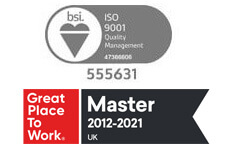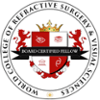Ensuring Effective Eye Care in Children

Among the approximately 16.4 billion human eyes on the planet, no two are alike. Every single one of our eyes is completely different to another – even our own two eyes have a huge number of differences. It is this uniqueness that makes iris recognition scanners so effective.
The majority of these differences – from pupil size and eyeball shape to corneal steepness – aren’t noticeable to the human eye; however, if you take a moment to look in a mirror at each of your irises, you’ll be able to see that the patterns and colours in one eye are completely different from those in the other eye.
But it isn’t just the appearance of our eyes that differs. Similarly, our individual eye care needs also vary. This is particularly true for people from different age groups, from babies and toddlers to children, teenagers, the middle-aged, and the elderly.
In this article, we’re focusing on the unique eye care needs of children. We’ll touch on common childhood eye conditions, their treatments, and how to spot the symptoms.
Understanding Eye Care in Children
Effective eye care is incredibly important in our younger years. Contrary to the myth that we are born with full-sized eyes, your eyes continue to grow and develop until around age 16. The years leading up to this time are therefore crucial to your long-term eye health and vision quality.
Moreover, with our vision being such an important factor in how we understand the world around us (around 80% of learning is believed to occur visually), it is crucial to ensure we care for our own and our children’s eyes effectively.
Thankfully, there is plenty of advice available on how to best care for young eyes. For example, the Department of Health recommends a child’s vision be screened between the ages of four and five years old. The NHS also offers free eye tests for those under the age of 16 and those under 19 who are in full-time education.
It is important to take advantage of these services, as many eye conditions can be spotted early. Moreover, early detection means better treatment outcomes. So, remember to schedule regular eye tests for both yourself and your children!
With that said, let’s take a closer look at some common eye problems that occur in children. We’ll talk you through the warning signs to look out for and what to do if you notice them.
Common Eye Problems in Children
Several eye problems are common among children. Thankfully, most of these problems are easily detected with a routine eye exam (which should be conducted during your child’s preschool years).
Here’s a list of some problems that you should be on the lookout for:
- Refractive Errors: It’s estimated that between 15% and 30% of children will have some kind of refractive error, such as myopia (short-sightedness), hyperopia (long-sightedness), and astigmatism. These errors occur when the shape of the eye causes light not to be refracted onto the retina properly. This can make it difficult to see at different distances or cause images to appear blurred.
- Amblyopia: Also known as “lazy eye”, amblyopia occurs when one eye is not fully developed, often due to a lack of use in childhood. It may be caused by a difference in refractive error in each eye and a condition called strabismus (squint), which causes each eye to look in a slightly different direction. If left untreated, the brain may eventually begin to ignore signals from the weaker eye.
- Strabismus: Also known as a “squint”, strabismus refers to a misalignment of the eyes. This may occur when one eye turns in, out, up, or down or otherwise focuses in a different direction from the other eye. This can lead to amblyopia if left untreated. However, when diagnosed early, patching the dominant eye is usually effective at realigning the weaker eye to restore proper vision.
These conditions are relatively common and can usually be treated easily. However, some childhood eye problems may require more serious and timely intervention.
This includes:
- Retinopathy of prematurity (ROP): Occurs when abnormal blood vessels grow in the retinas of babies who are born prematurely, or those who are born weighing under 3 pounds. This can cause serious vision problems and even blindness.
- Childhood cataracts: Also called infantile cataracts, is characterised by the clouding of the lenses – a process usually associated with ageing. Some babies may be born with the condition (known as congenital cataracts), while some children can develop cataracts at a young age.
- Retinoblastoma: Retinoblastoma is a malignang tumour that usually develops in the first three years of life. It begins in the retina and is often characterised by whiteness in the pupil and loss of vision in the affected eye.
- Congenital glaucoma: Glaucoma – a condition that affects the optic nerve – is more common in adults, but it can also occur in children. It occurs due to high pressure in the eye, which is caused by abnormal development. It can often be treated with medication and/or surgery.
The occurrence of these conditions may be associated with genetics. As such, an eye doctor may be able to make you aware of any potential risk to your children’s vision. However, it is important to be aware of the signs of such conditions and when to seek medical help.
Spotting Eye Problems in Children
As mentioned at the beginning of this article, spotting eye problems early and seeking attention promptly is the best thing you can do to safeguard your child’s eye health and long-term vision.
Here are some of the main signs to look out for that could indicate an eye condition in young children:
- Constantly rubbing or itching their eyes
- Experiencing a sensitivity to light
- Not being able to focus
- Poor ability to track or follow an object
- Abnormal alignment or movement of the eyes
- Chronic redness of or around the eyes
- Constant tearing of the eyes
- A white or discoloured pupil
When your child is a bit old and enters school, there are some other signs to look out for, including:
- Being unable to read or see objects at a distance (such as trouble reading the whiteboard)
- Squinting and eye strain
- Difficulty reading up close
- Sitting too close to screens
As we mentioned earlier, regular eye checks should be a routine part of your child’s medical care. But we understand that knowing who to see, when, can be confusing, as there are several kinds of eye doctors.
So, let’s try and get a clearer understanding of who your children need to see, and how often. Below, we’ve put together some general advice about the different kinds of eye doctors, as well as some specific advice for chidren of different age groups.


